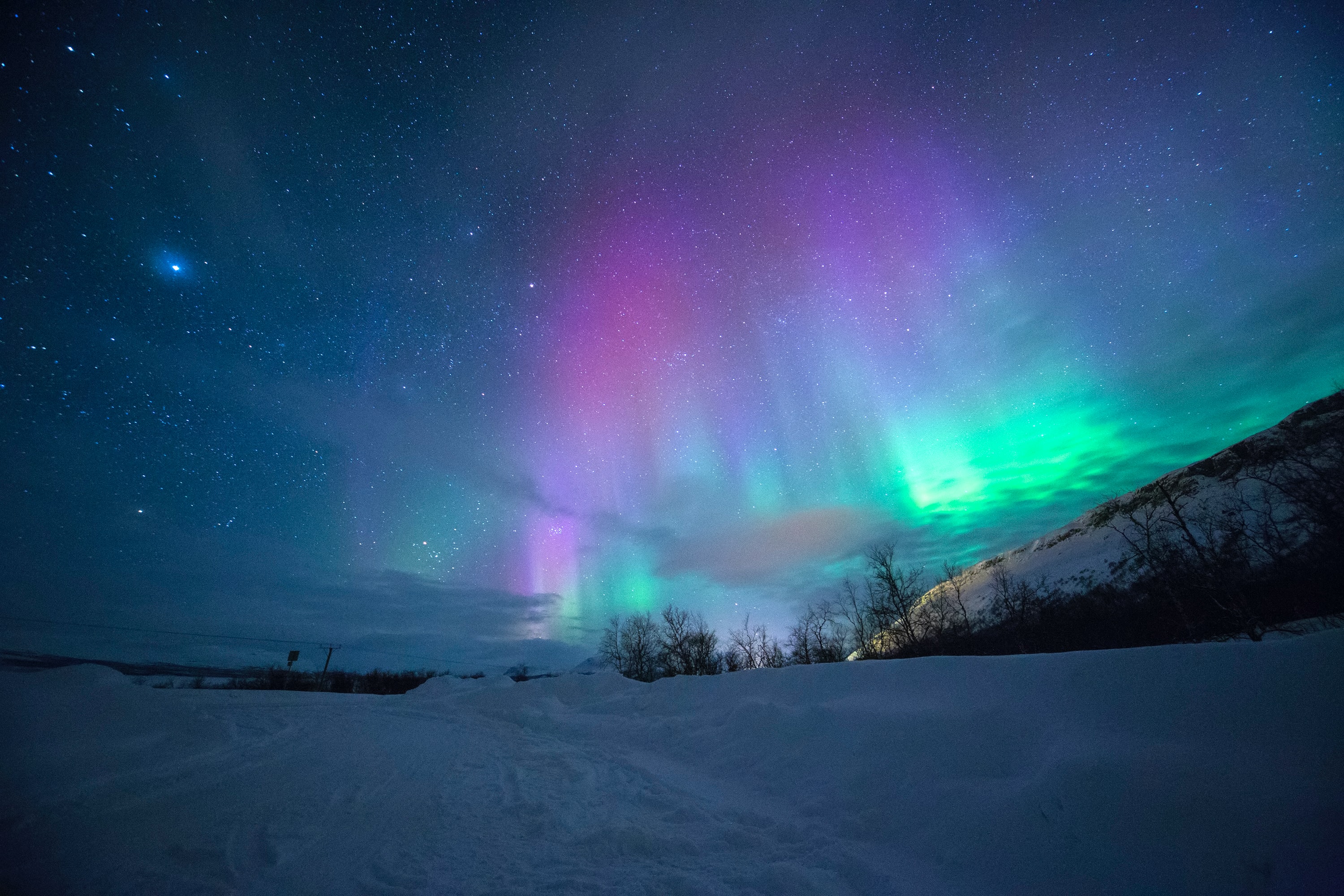Aurora

Stunning swirls of light that dazzle the night skies..
Have you ever wondered how these beautiful aurora/nothern lights are formed? Why do they only occur in the earth’s polar region?
It brings us back to the sun, it is not simply a ball of fire. Instead, its surface is like a hot soup (plasma) at which electrons and nuclei flow around each other. While it is shaped by the sun’s magnetic field, it also frequently leaks out of the sun, carrying trickle of solar plasma and stream of charged particles into the space, known as the solar wind.
When the solar wind reached the earth, they are deflected by the earth’s magnetic field, diverting them into the north and south poles. These charged particles that reached the ionosphere of the earth collide and interact with the gases from the atmosphere, releasing energy in the form of glowing halo, otherwise known as the aurora.
The colors and the form of the aurora vary, depending on the composition in the atmosphere and the altitude, and the interaction can produce different wavelength of light, forming varying colors! Aurora is indeed one magical display by the nature.
In a world full of sunsets, be the aurora!
Keywords
-
Plasma: Plasma is superheated matter – so hot that the electrons are ripped away from the atoms forming an ionized gas. It comprises over 99% of the visible universe. Plasma is often called “the fourth state of matter,” along with solid, liquid and gas. Just as a liquid will boil, changing into a gas when energy is added, heating a gas will form a plasma.
-
Ionosphere: The Ionosphere is part of Earth’s upper atmosphere, between 80 and about 600 km where Extreme UltraViolet (EUV) and x-ray solar radiation ionizes the atoms and molecules thus creating a layer of electrons. the ionosphere is important because it reflects and modifies radio waves used for communication and navigation.
-
Wavelength: Wavelength is the distance between identical points (adjacent crests) in the adjacent cycles of a waveform signal propagated in space or along a wire. Wavelength is inversely related to frequency, which refers to the number of wave cycles per second. The higher the frequency of the signal, the shorter the wavelength.
Images


References
https://www.psfc.mit.edu/vision/what_is_plasma
https://www.swpc.noaa.gov/phenomena/ionosphere
https://www.rmg.co.uk/stories/topics/what-causes-northern-lights-aurora-borealis-explained
https://www.youtube.com/watch?v=OZ5idaNCIgA